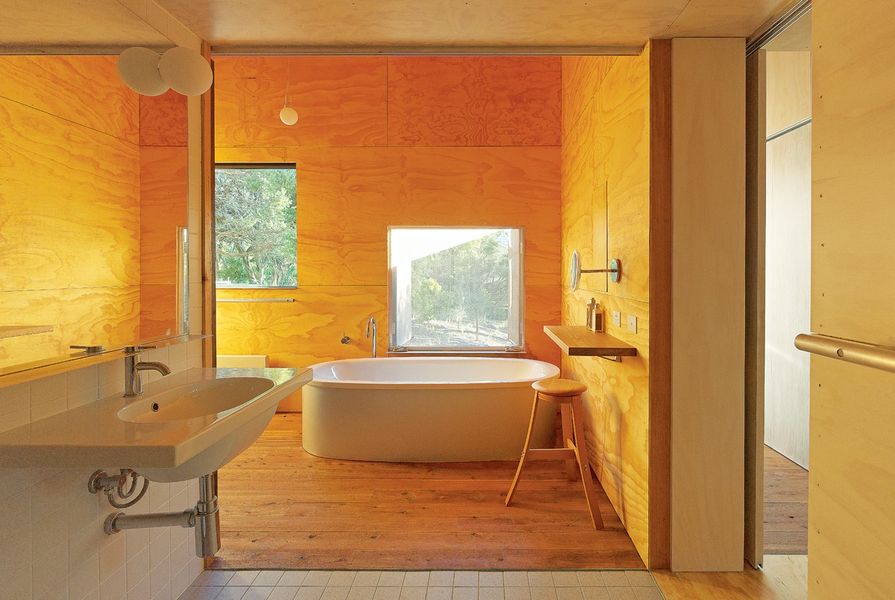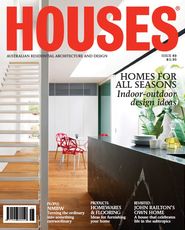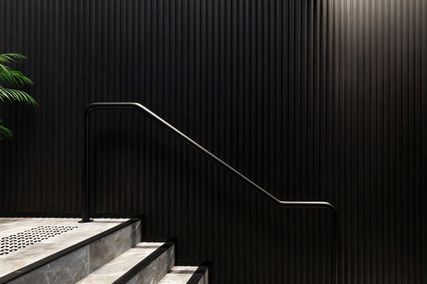C-D face plywood
Plywood has a set of defined properties that contribute to the construction process, including bracing in all directions, no need for trim or architraves and the ability to provide a structural membrane. It is seen here at the Sorrento House. amerind.com.au
At the Sorrento House, Ampelite encloses a lightwell. Image:
Peter Bennetts
Ampelite
Ampelite allows a particular quality of light into the interior, without the sense of “window” or “opening.” ampelite.com.au
Concrete block
Concrete block is between traditional clay brickwork and solid concrete. It is structural and also imprints a texture and a grain on a space. boral.com.au
The Elwood House has a radial sawn timber cladding.
Image: Peter Bennetts
Radial sawn timber
Radial sawing is one of the most sustainable ways of processing timber due to the minimal wastage. The practice uses this product both internally and externally. radialtimbers.com.au
Bluestone
A local product, bluestone is often used in Melbourne. This product has been used by NMBW to connect the Fitzroy Apartments to the surrounding urban environment.
Face brick
The modularity of brick makes it highly flexible and it is both structural and decorative. The historical use of brick in Melbourne is often a reference point for NMBW.
Read the profile of NMBW Architecture Studio from Houses magazine.
























